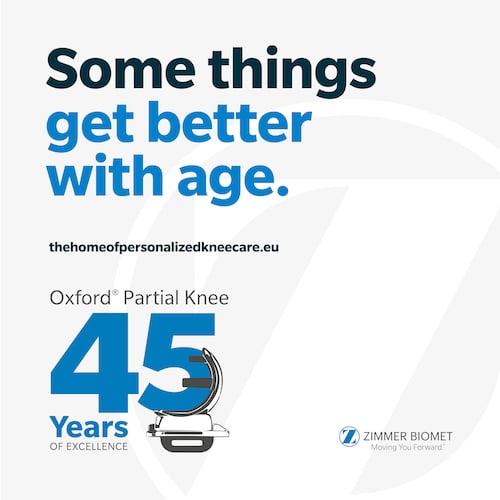Cemented fixation has been considered the ‘gold’ standard in TKR until now1. Despite the potential advantages of cementless fixation, there has been a perception that the higher cost of cementless implants outweighs any benefit1. This paper shows that higher implant costs do not necessarily mean higher procedural costs.1
As patients receiving a TKR get younger, are more active and live longer, interest has increased in the potential to improve long-term survivorship with the ’biological fixation’ provided by cementless components. 1 The authors suggest that “once osseointegration occurs between the bone and the porous implant surface, loosening is highly unlikely.”1
Other purported benefits of cementless fixation include:1
- shorter operating times
- bone stock preservation
- elimination of potential risks of thermal necrosis from cement curation
- no potential third-body wear from lose cement debris
In this paper, costs were calculated using a time-driven activity-based costing algorithm, which has been “shown to be more accurate in estimating procedural costs in total joint arthroplasty than traditional accounting methods.” 2
This analysis showed that, regardless of the higher implant costs ($3047.80 vs $2808.73, p < 0.0001), cementless TKR was associated with lower total costs ($5921.80 vs $6111.76, p = 0.0032). 1
This saving generated by lower non-implant costs ($2874.00 vs $3303.03, p < 0.0001), was due to:
- Lower supply costs (excluding implant & medication costs): ($639.49 vs $815.57, p < 0.0001)
- Lower operative personnel costs ($982.01 vs $1238.26, p < 0.0001)
- The mean operative time was shorter for the cementless group compared to the cemented group (80 vs 101 minutes, p < 0.001)
- Lower postoperative personnel costs ($995.57 vs $1087.66, p = 0.0150)
This was offset slightly by higher medication costs ($256.94 vs $161.55, p < 0.0001)
The authors also investigated whether cementless TKR was an independent risk factor for short-term outcome metrics, including complications, readmission, revision procedures, or PROMs. They did not observe any significant differences in complication rate, readmission rate, revision rate, unscheduled medical encounters, or PJI between the groups within one year of surgery. 1
In their discussion, the authors acknowledged that implant costs are highly variable, and as such, their findings may not be directly extrapolated to other institutes; but concluded from their experience that the “increased cost of a cementless implants is recouped through savings in the cost of cement and supplies, as well as shorter operative times.” 1

